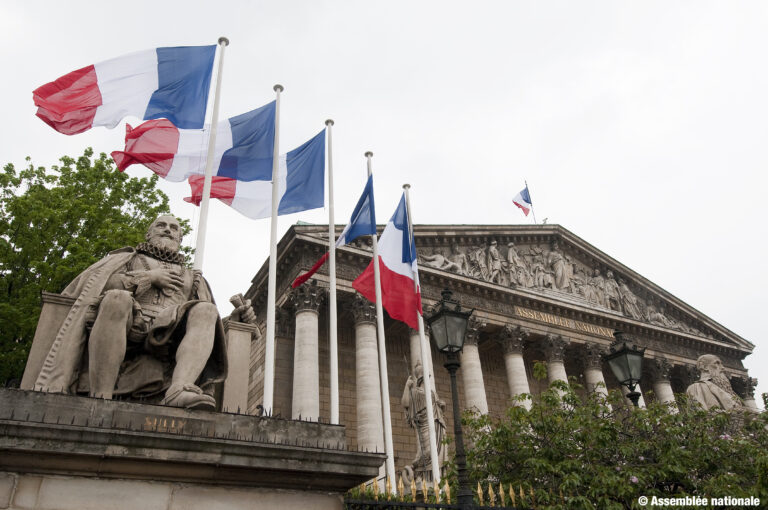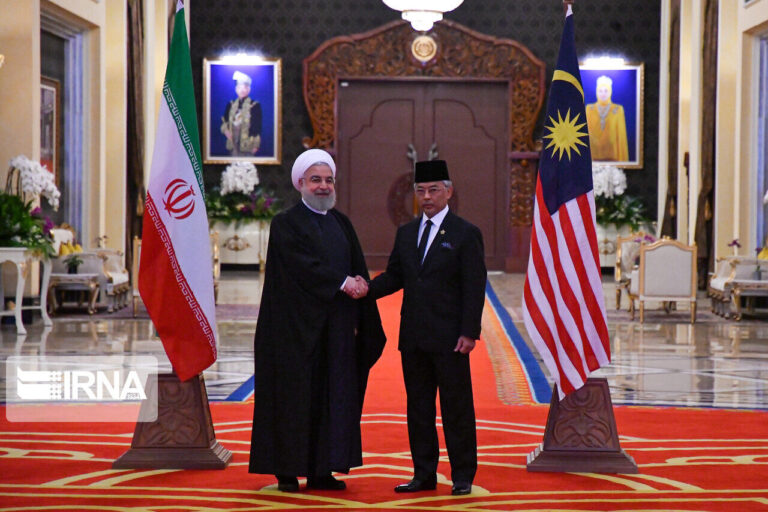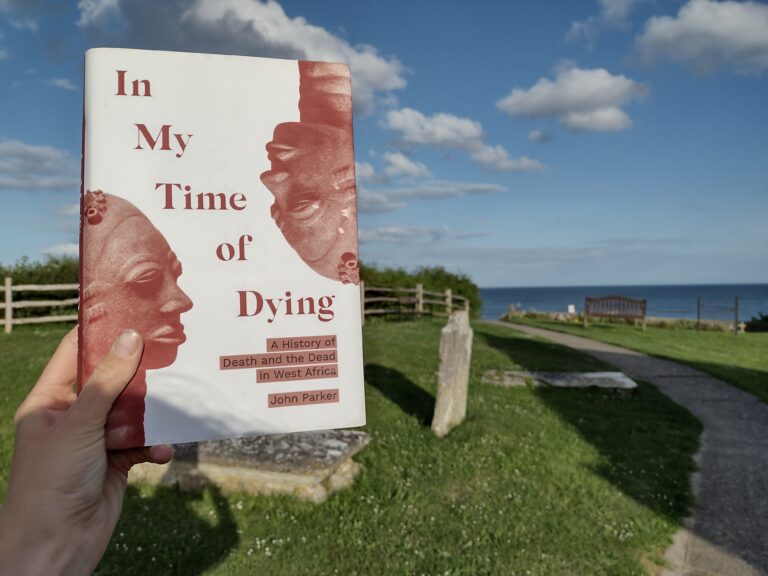Queer Baroque: Nikko Mausoleum
by Joe Nickols
Canonical art terms, such as ‘baroque’, are regularly thrust into non-European discourses where they have no relevance, rather, they constrain what they describe within a matrix of colonial ownership.[1] Japanese art and architecture has faced this issue extensively, with Europeans and North Americans consistently adapting, warping, and controlling the global perception of Japanese aesthetics since the mid-nineteenth Century.[2] This warping of Japanese sensibilities includes the enforced narrative of the ‘harmonious’ and ‘peaceful’ essence of the Japanese style. These terms, for instance, overlook the conscious usage of floorboards at Hosen-in temple that are marked with the blood of executed samurai. The de-historicization of the term ‘zen’ falls into this colonial project too. The nuances of the term are condensed into a Western euphemism that combines modernist minimalism and quietness with a tinge of smugness. This programme of cultural colonialism was partly instigated within Japan itself as a response to the external pressures to enter global politics. The authority of colonial powers encouraged, and arguably forced, Japan to ‘self-colonise’ and develop in the guise of Western hegemonic power. This included placing Japanese art and architecture within the pre-established Eurocentric canon and erasing much of the diversity and social significance of their artistic heritage. This article uses the Nikkō Tōshōgu mausoleum, dedicated to the first Tokugwa shogun Tokugawa Ieyasu (1543-1616), as a case study to discuss its framing as Baroque, and explore its overlooked queerness.
The Nikkō Tōshōgu was arguably the most significant and important building project constructed in Japan under military dictatorship of the Tokugawa shogunate (which spanned 1603 to1868). Commissioned in 1636 by Tokugawa Iemitsu (1604-51), the third shogun, to affirm their legitimacy and authority through visual propaganda, this building solidified the Tokugawa rulership that would last another 200 years (Fig. 1). However, over 300 years later the cultural nuances and social significance of this mausoleum were dismissed by the German architect Bruno Taut, who in 1937 belittled the Nikkō Tōshōgu complex as ‘the historical source of Japanese trash’, with the aesthetics being dismissed as ‘barbaric overloaded Baroque’.[3] These assertions by the German architect supported the Eurocentric colonisation of Japanese aesthetics, with many early ethnographers attempting to synthesise Japanese and Euro-American aesthetics without any comprehension of the developments of Japanese style. Using this logic, Japanese aesthetics became ahistorical and commodified, enabling simplification and integration into the Eurocentric canons which governed global aesthetics. This is not dissimilar to threats on the Japanese body. Eugene Van Reed, an American entrepreneur, transported a shipload of Japanese labourers to be used as ‘coolies’ on sugar plantations in Hawaii, even in the face of the Meiji government’s (1868-1909) protestations.[4] Due to the unequal treaties of the time, Van Reed possessed extraterritoriality and proceeded to slot Japanese subjects into the Euro-American racial hierarchy without fear of legal repercussions. This commodification of the Japanese body by external agents forced Japan to solidify its people under ‘civilised’, ‘Western’ nationalism to minimise the oppression from foreigners within its borders.

The designation of the term ‘baroque’ to Nikkō Tōshōgu is ambiguous in its meaning, as aside from being constructed (by chance) concurrently with the original expansion of the European style in the seventeenth century, the building itself has no connection with any developments of the baroque movement nor its Catholic Counter-Reformation origins. Taut’s appellation reveals little other than their own aesthetic sensibilities, refusing to acknowledge any contextual information about the building. Taut’s negative judgement is a form of intellectual repression, one that aims to delegitimise a form of Japanese culture that could not correspond with European sensibilities of the time, through a derision of baroque excess. In its usage the term emphasises the ornateness of the decoration of building, whilst erasing the local definition of the building’s style: Zenshuyo. The Zenshuyo style originated during the late twelfth century, and is recognisable through its penetrated tie beams, bilateral symmetrical building layouts, fan shaped rafters, curvilinear forms (typified through the use of cusped windows), and its emphasis on gates leading towards the main building. The style rose to prominence under Tokugawa Iemitsu’s patronage, becoming the de facto architectural style of the regime due to its ability to project power. Tokugawa authority was conveyed through architectural projects to confer power upon themselves, making the intangible tangible through experiential and visual structures. Mausoleums were particularly important in this propaganda programme, as the homage to the deceased shogun by the living sanctified and legitimised the power of their descendants and the extant shogun, magnifying the divine authority of the Tokugawa.
The centrepiece of the Nikkō Tōshōgu is the Yomiemon gate, a two-story Chinese style gate marks the furthest the public could access within the complex. Beyond it was the sacred inner shrine, accessed solely by the Tokugawa and priests. The Yomiemon combined Confucianist, Daoist, Shinto, and Buddhist iconographies to become the regime’s iconographical mouthpiece, conveying didactic messages of power. The public facing (south) side depicts Confucian virtues of good governance (Fig. 2); whilst the private face (north) side depicts Daoist immortals and emblems of longevity. The public facing imagery employed Chinese imagery to convey the wisdom and virtue of Tokugawa rulership, exemplified through the carving of Gong Dan, depicted ascending to the throne to hear public petitions whilst washing their hair, symbolising the social responsibility Tokugawa shoguns maintained and their intent to be continuously working for the people. The ornateness of the Yomiemon contained a complex iconographic structure, with each element of design programmed to convey a specific meaning of power. The Yomiemon gate’s architectural design challenges the Emperor’s use of visuality to convey power that was employed at the Imperial Grand Ise Shrine. The Yomiemon mimics the gate house marking the entrance to the sacred inner shine of Ise (Fig. 3).[6] This visually asserts Iemitsu and the Tokugawa authority as equal, if not superior, to the Imperial family. Nikkō Tōshōgu became, through its political associations, a conceptualisation of Shogunal national supremacy.[7] The design was not operating in a solely stylistic manner, unlike many features in European Baroque architecture characterised by ornate design flourishes. So significant was the design of the Yomiemon that Iemitsu would force annual pilgrimages and regular rituals to be made to ensure the populace would see the iconography at the site and in so doing comprehend the power of the Tokugawa. One could argue that the Yomiemon design and European Baroque architecture are linked in their mission to engage the populace through visual intrigue to adopt adherence to powerful state ideologies. Yet this is not the context within which Taut derogatorily dismissed the Baroque.


Though Nikkō Tōshōgu had been designed to maintain the authority of the Tokugawa, and was arguably the most significant architectural structure in Japan from its construction until the end of the period in 1868, it threatened the subsequent Meiji society since the building intrinsically represented the ideologies of the Tokugawa, many of which did not fit with the Eurocentric framework that the new government was enacting. Meiji Japan operated a matrix that rejected many Tokugawa principles, particularly one’s that could not conform to the new construction of society. Meiji Japan transposed the Eurocentric binary, biological determinist gender system and the hetero-homosexual binary onto a population where these concepts had not existed. In effecting this, homophobia and transphobia were introduced to the Japanese framework. Pre-Meiji gender was constructed through visual signifiers, mainly sartorial (clothing) and tonsorial (hair styling), not biological sex, resulting in more diverse gender categories.[8] There were multiple gender identities that did not exist in a European context, such as the wakashu, kagema and the onna-kagema. The onna–kagema was particularly complex in their construction, embodying a triple layered gender where a female-sexed body adopts the identity of a male-sexed body performing a female gender.[9] As each identity defined each individual as a distinct human embodiment, their genitalia and the sexual acts the body performed did not define their sexuality or gender identity.[10] Indeed, there are records of women hiring kagema (a male-sexed body performing a female gender) prostitutes, meaning that there could have been relationships between people of the same gender but different sex.[11] The construction of modern sexuality emphasises the sameness of biological gender between sexual object and sexual subject, which did not operate in Japan as it could not accommodate these existing gender constructions. The intense connection of the Nikkō Tōshōgu to the Tokugawa meant that it was intrinsically connected to a time that was becoming increasingly demonised as deviant.
The expulsion of Europeans by Iemitsu and the enactment of the seclusion policy in the 1630s is linked to the vilification of Japanese sexuality that many Christian missionaries were spreading in the early 1600s. European monks of the era wrote about the widespread nature of same-sex sex amongst the Japanese in shocking terms. Indeed, sexuality in Japan was much more fluid than in Europe, with many people taking lovers of a variety of genders throughout their lifetime. The popularity of male-male sex was so prevalent in society that the “Way of Shudo” (Way of same-sex love) developed to promote appropriate and rewarding relationships, in the same manner that the “Way of Tea” or the “Way of the Warrior” instructed on best conduct for tea and battle. This demonstrates the acceptability of non-heternormative relationships in Edo Japan. For instance, it is known that Iemitsu enjoyed receiving penetration and had been concerned with the anti-sodomy doctrine that had been entering Japan through the missionaries. As the Nikkō Tōshōgu acted as a Iemitsu’s declaration of power following the removal of Europeans, the building can be read as a queer space that operated as a proclamation of perpetuating indigenous bodily autonomy, protecting Japanese constructs of gender and sexuality. The queerness of the Tokugawa period, and particularly the queerness of the shoguns, proved highly problematic for Meiji historians who struggled to celebrate these famous warriors who did not engage exclusively in heterosexuality. This element of sexual intrigue may have added to the Meiji rejection of Tokugawa spaces. The architectural programme enacted by the Meiji government would reflect this theory. The 1880s saw many European architects receive official commissions to transform the Tokyo metropolis.[12] By producing monumental Western style buildings, the government reified the ideological separation from the Tokugawa era, whilst simultaneously proclaiming Japan’s adoption of Eurocentric globalism.
Bruno Taut’s dismissal of the complex as ‘barbaric baroque’ ignores any intriguing comparisons the Nikkō Tōshōgu may have with the Baroque movement, such as the shared purpose of architecture as propaganda. It is clear that Taut ignored the context of the complex through their desire to prioritise the notions of simplicity and harmony within Japanese architecture, perpetuating the colonial narrative of Japanese culture within the global art canon. To contain Nikkō Tōshōgu in the category of Baroque would silence much of the context of the space, simultaneously prioritising the surface level ornateness whilst ignoring the symbolism of the iconography contained within the space (Fig. 4). The ignorance surrounding the Meiji era judgement of Nikkō Tōshōgu reflects the complex relationship regulatory bodies maintained with reminders of the previous Tokugawa era, especially the constructions of gender and sexuality within the recent past. Today the social significance of Nikkō Tōshōgu is recognised much more, however, more research is needed to explore the queerness of the site more extensively.

[1] Carolyn Dean writes extensively about the colonial aspects of Eurocentric terminology in the essay The Trouble with (the Term) Art
[2] Japan was forced to end its period of national seclusion by Commodore Matthew Perry’s gunboat diplomacy in 1853, which led to the end over 250 years of Tokugawa shogunal rule (1603-1868).
[3] Bruno Taut, 265-66
[4] Botsman, 2011, 1327.
[5] Gerhart (1999), 136
[6] Coaldrake (1996), 186-7
[7] Gerhart (1999), 103
[8] Gregory M. Pflugfelder, “The Nation-State, the Age/Gender System, and the Reconstitution of Erotic Desire in Nineteenth-Century Japan.” The Journal of Asian Studies 71, no. 4 (2012), 966.
[9] Paul Berry, “Rethinking “Shunga”: The Interpretation of Sexual Imagery of the Edo Period.” Archives of Asian Art 54 (2004), 11.
[10] Pflugfelder, 2012, 967.
[11] Berry, 2004, 11.
[12] Toshio Watanabe, “Josiah Conder’s Rokumeikan: Architecture and National Representation in Meiji Japan.” Art Journal 55, no. 3 (1996): 23
Bibliography
Berry, Paul. “Rethinking “Shunga”: The Interpretation of Sexual Imagery of the Edo Period.” Archives of Asian Ar 54 (2004): 7-22.
Botsman, Daniel V. “Freedom without Slavery? “Coolies,” Prostitutes, and Outcastes in Meiji Japan’s “Emancipation Moment”.” The American Historical Review 116, no. 5 (2011): 1323-347.
Coaldrake, William, “Tokugawa Mausolea: Intimations of Immortality and the Architecture of Posthumous Authority”, in Architecture and Authority in Japan, ibid., 163-192. London: Routledge, 1996.
Dean, Carolyn, “The Trouble with (the Term) Art”, Art Journal,vol. 65, No. 2, 2006: 24-33
Gerhart, Karen M. The Eyes of Power: Art and Early Tokugawa Authority. Honolulu, HI: University of Hawai’i Press, 1999.
Pflugfelder, Gregory M. Cartographies of Desire: Male-Male Sexuality in Japanese Discourse, 1600-1950. Berkeley, CA: University of California Press, 2007.
Screech, Timon. Obtaining Images: Art, Production and Display in Edo Japan. Reaktion Books, 2017.
Watanabe, Toshio. “Josiah Conder’s Rokumeikan: Architecture and National Representation in Meiji Japan.” Art Journal 55, no. 3 (1996): 21–27.

Joe Nickols
they/them
Joe is an art historian specialising in East Asia, with a particular focus on Japan. Joe’s research mainly engages with queer and gender discourse, particularly focusing on the representation, significance, and development of of Japanese gender construction within society. Joe is also a freelance curator and works closely with contemporary artists.
Instagram: @joenickols
LinkedIn: Joe Nickols
SOAS History Blog, Department of History, Religions and Philosophy, SOAS University of London







